10 steps to make an impactful presentation
- Meha Jadhav
- Dec 18, 2022
- 3 min read
Follow these 10 tips to capture your audience and present effectively!
Slide presentations are the most common way to present research during Ph.D. Here I will tell you why effective communication is important and how you can improve your presentation skills.
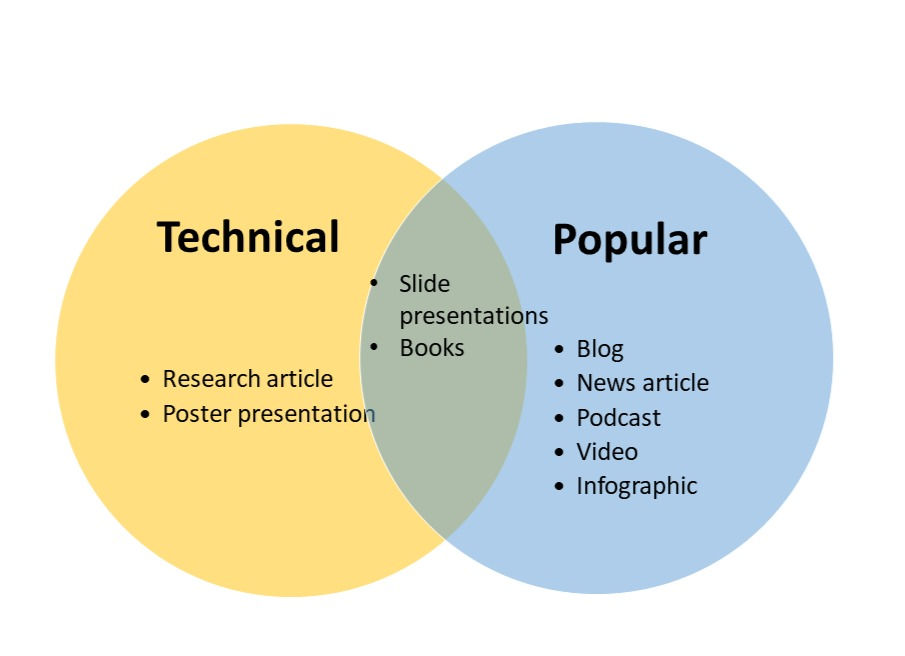
As a scientist, you will also communicate your science quite often. It is a way to decimate the knowledge you have acquired, with your research to your peers and the broader society. Effective communication improves the impact of your research and also increases its reach. This is especially important when communicating research to potential employers and funding agencies.
Communicating your work to your peers, helps you get feedback and improve the quality of your research. Finally, communicating your research to others can help improve the clarity of your thoughts.
There are many different ways to communicate science. I have listed a few in the diagram above. During your Ph.D., you will communicate your work most frequently via slide presentations. It is therefore crucial, that you learn how to present your research clearly.
Practice does make one better in this case. When I started grad school, I was terrible at giving talks. I got a lot of help and feedback from my mentors and peers, which helped me improve my presentation skills over the years.
Here are 10 important lessons that substantially improved my talks:
Tip #1 - Know thy audience
Before you start working on the presentation outline, understand who your audience is. This will help you decide how much background to give, the overall pitch of your talk, whether you should include technical details related to your experiments, etc.
Tip #2 - Make an outline
Before making your slides, sketch an outline of the talk. List the key ideas you want to include and then break them down into slides. This will help you figure out how many slides you would like to include and whether you can present things within the time limit of the talk.
Tip#3- The title should give a takeaway message
Keep the slide titles as a series of statements that provide a takeaway message from the slide. This will also help you add content that explains/confirms these statements.
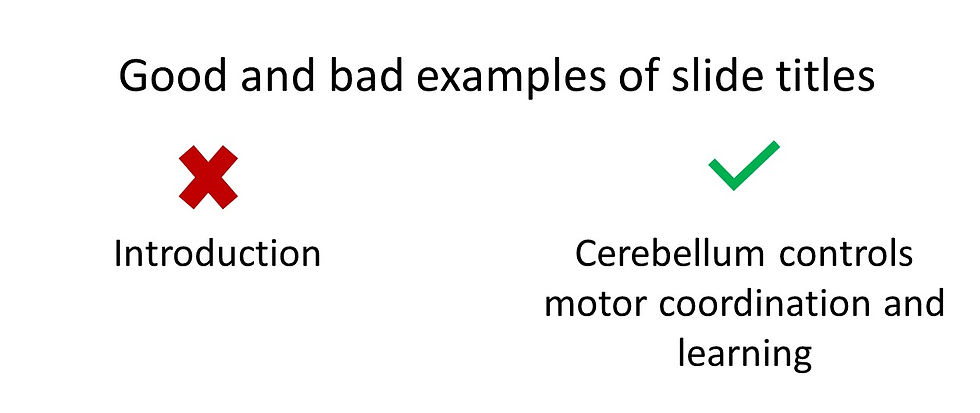
Tip #4 - Choose a good font
We often neglect the choice of font. A good font ensures, that a person at the back can also read your slide title. In general, sans-serif fonts work well for titles. Make sure that you use an appropriate size too.
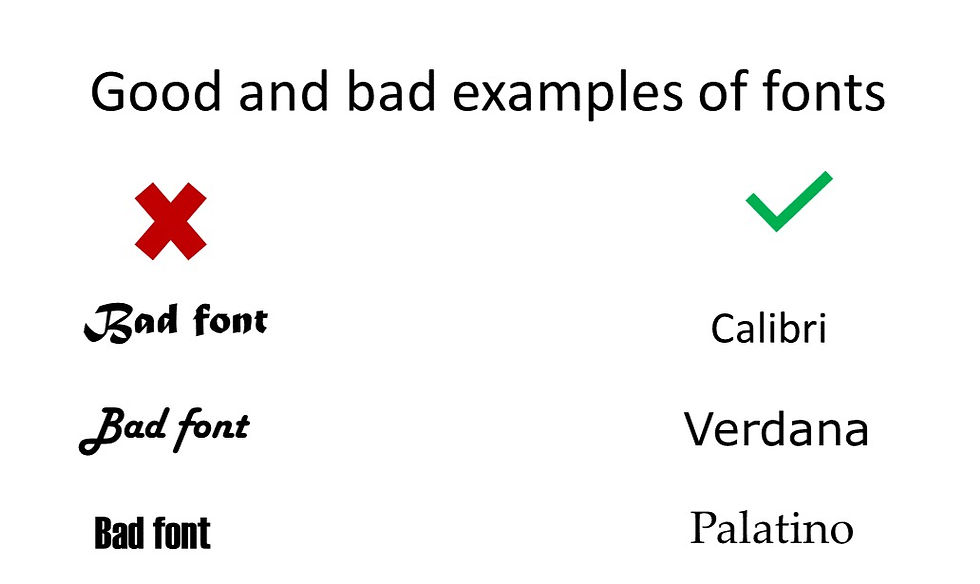
Tip #5 - Make it visual
Make the slides visual. Texts should be limited to titles, references, and labels only. Explain concepts with schematics. The text takes the attention of the audience away from what you are saying.
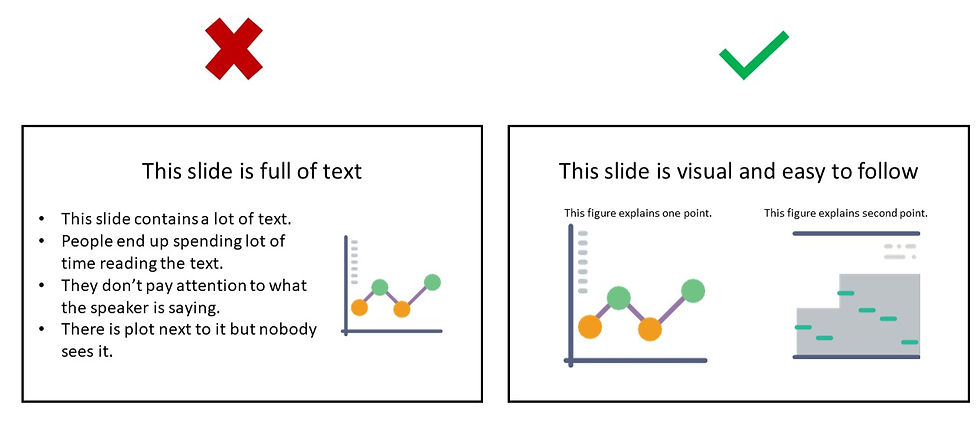
Tip #6 - Keep it simple
Don’t crowd the slide, it confuses the audience. Keep only one or two plots/figures per slide. Make sure there is some white space in your slide. As a rule of thumb, 25 % of your slide should be empty space.
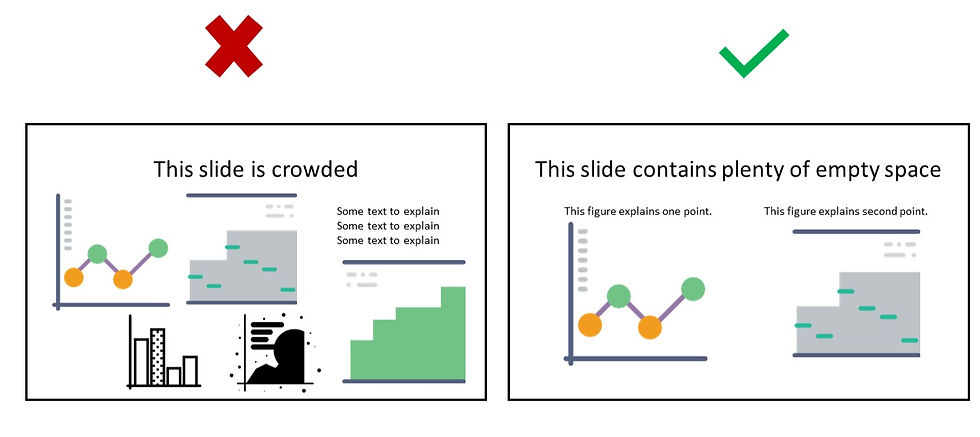
Tip #7 - Make a script and stick with it
Scripting your talk will ensure that it flows well and has minimum interruptions. I usually write it down, either as comments in the presentation or in a separate document. I run through it several times until I can deliver the whole presentation with minimum ‘aahs’ and ‘umms’.
Tip #8 - Respect the time limit
While making slides and scripting the talk, keep the time limit in mind. The audience loses interest if you go overtime. Once you have a script, you may have to back and forth between your slides and the script to ensure it fits the time limit.
Tip #9 - Convey your enthusiasm
Capture people's attention by showing how excited you are about your work. Use your body language and voice to convey enthusiasm, especially when talking about some exciting results. I record my mock talks (video/voice) to see if my voice sounds flat. I actively start working on my voice inflections, once I am comfortable with my script.
Tip #10 - Get feedback
Getting feedback is one of the best ways to improve your presentations. Present it to people who will listen and are not afraid to give constructive feedback.
Finally, attend talks not just to learn the science but also to observe how they present it. Ask yourself if you liked or did not like the talk and why. Try to imbibe the practices of who you think are good speakers.
I would love to know if these tips helped you. If you would like to know more, mention in the comments below!



Comments